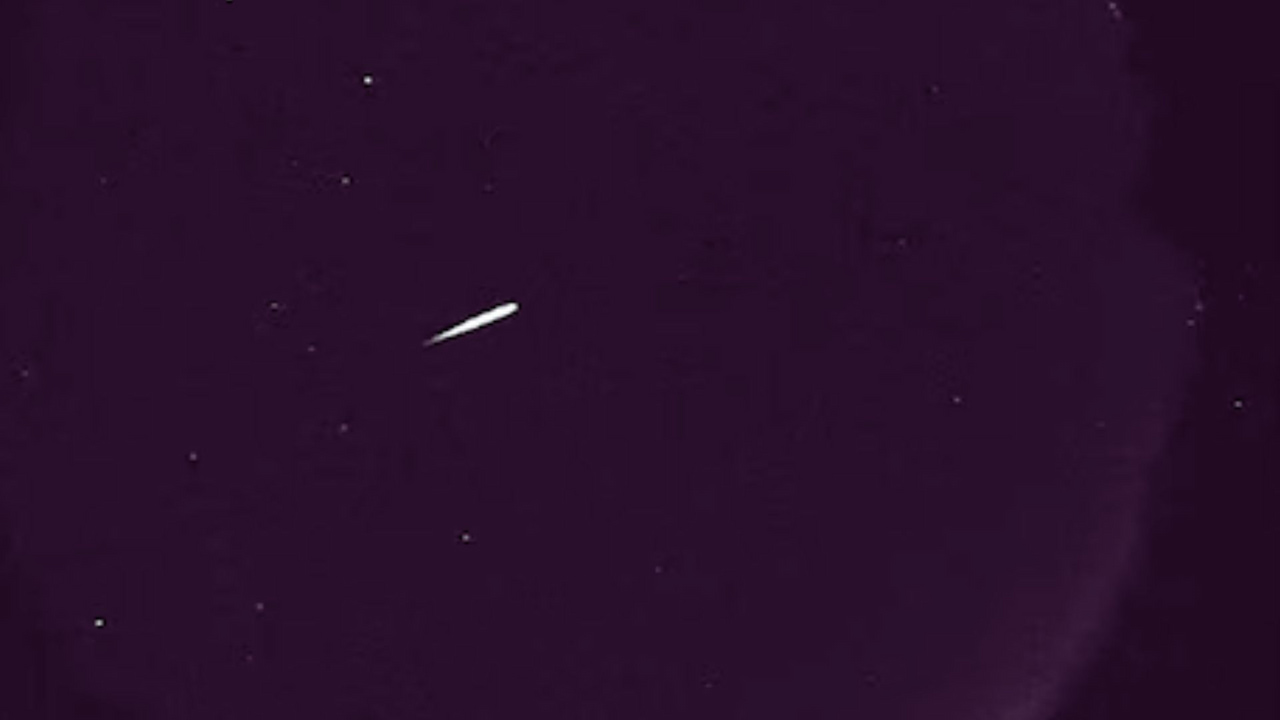Cosmic Fireworks: The Orionid Meteor Shower Lights Up the October Sky
Skywatchers will be treated to a dazzling display of celestial fireworks tonight as the Orionid meteor shower reaches its peak. The famous Halley’s Comet’s debris causes this annual event, which promises to paint the night sky with visible streaks of light.
Peak viewing tonight
The best time to catch this cosmic show begins around 11 PM tonight and continues into the early hours of Monday morning. While visible worldwide (except in Antarctica), the waning moon may slightly dim the spectacle this year.
Nature’s Light Show
The Orionids are known for their speed and brightness. These meteors zip through our atmosphere at a whopping 148,000 mph, often leaving glowing trails in their wake. NASA experts say these “trains” are actually incandescent debris, adding an extra wow factor to the display.
Halley’s Comet Connection
Although Halley’s Comet itself won’t be visible until 2061, we get to enjoy its leftovers twice a year. The comet sheds ice and rocky dust each time it swings near the sun. This debris becomes the Orionids in October and the Eta Aquarids in May.
How to Watch
To maximize your meteor-spotting chances:
- Find a dark spot away from city lights.
- Lie flat on your back.
- Look up, taking in as much sky as possible.
- Give your eyes 30 minutes to adjust to the dark.
- Avoid looking at your phone; the bright screen can ruin your night vision.
While the meteors appear to come from the constellation Orion, you don’t need to focus there. In fact, looking 45 to 90 degrees away from Orion often provides the best views of longer, more spectacular streaks.
A Cosmic Plateau
Unlike some meteor showers with sharp peaks, the Orionids offer steady activity for several days. “The Orionids have a kind of flat peak—a plateau of activity,” explains Robert Lunsford, fireball report coordinator for the American Meteor Society. This means even if tonight is cloudy, you’ll have excellent viewing opportunities in the coming days.
Counting Cosmic Debris
On average, the Orionids produce 10 to 20 meteors per hour at their peak. The Orionids are the best shower of the year despite being less frequent. Their speed and brightness often result in memorable fireballs—meteors brighter than the planet Venus.
A Celestial Journey
These meteors offer more than just a lovely light show. They connect us to the vast cycles of our solar system. Halley’s Comet, the source of the Orionids, takes about 76 years to complete its orbit around the sun. It last visited the inner solar system in 1986 and won’t return until 2061.
Natural language processing insight.
Interestingly, astronomers use natural language processing (NLP) techniques to analyze historical records of meteor showers and comets. This helps them piece together long-term patterns and improve predictions of future celestial events.
A Universal Experience
Meteor showers like the Orionids remind us of our place in the cosmos. Lunsford eloquently expresses this sentiment: “Reconnecting with nature and embracing our place in the universe.” Everything up there is in motion. So no one night is the same—everything has moved a little bit—and no year is the same.”
Beyond the Orionids
While the Orionids take center stage this month, skywatchers have more to look forward to:
- Comet C/2023 A3 Tsuchinshan-ATLAS is visible in the western sky after sunset until early November.
- Hunter’s Moon: October’s full moon, also known as a supermoon, reached its peak on October 17th but will continue to wane throughout the month.
The Ever-Changing Sky
Recent observations have revealed an unexpected twist in the story of Comet C/2023 A3 Tsuchinshan-ATLAS. Originally thought to have an 80,000-year orbit, new data suggests it may be on a path that takes it out of our solar system entirely. This serves as a reminder of the dynamic nature of our cosmic neighborhood.
Whether you’re a seasoned astronomer or a casual stargazer, the Orionid meteor shower offers a chance to witness the beauty and wonder of the night sky. So bundle up, find a dark spot, and prepare to be amazed by nature’s own fireworks display.
Table of Contents
